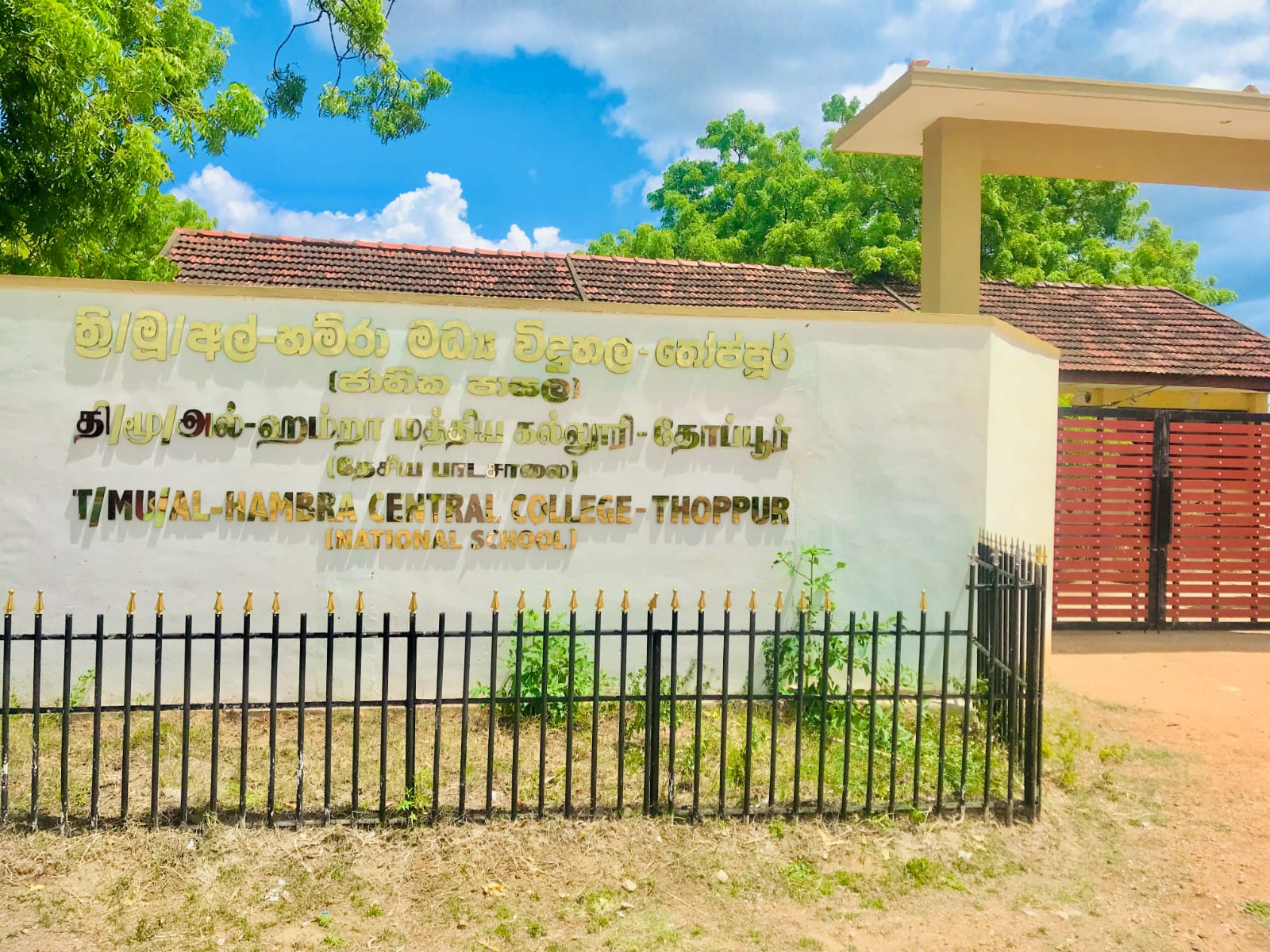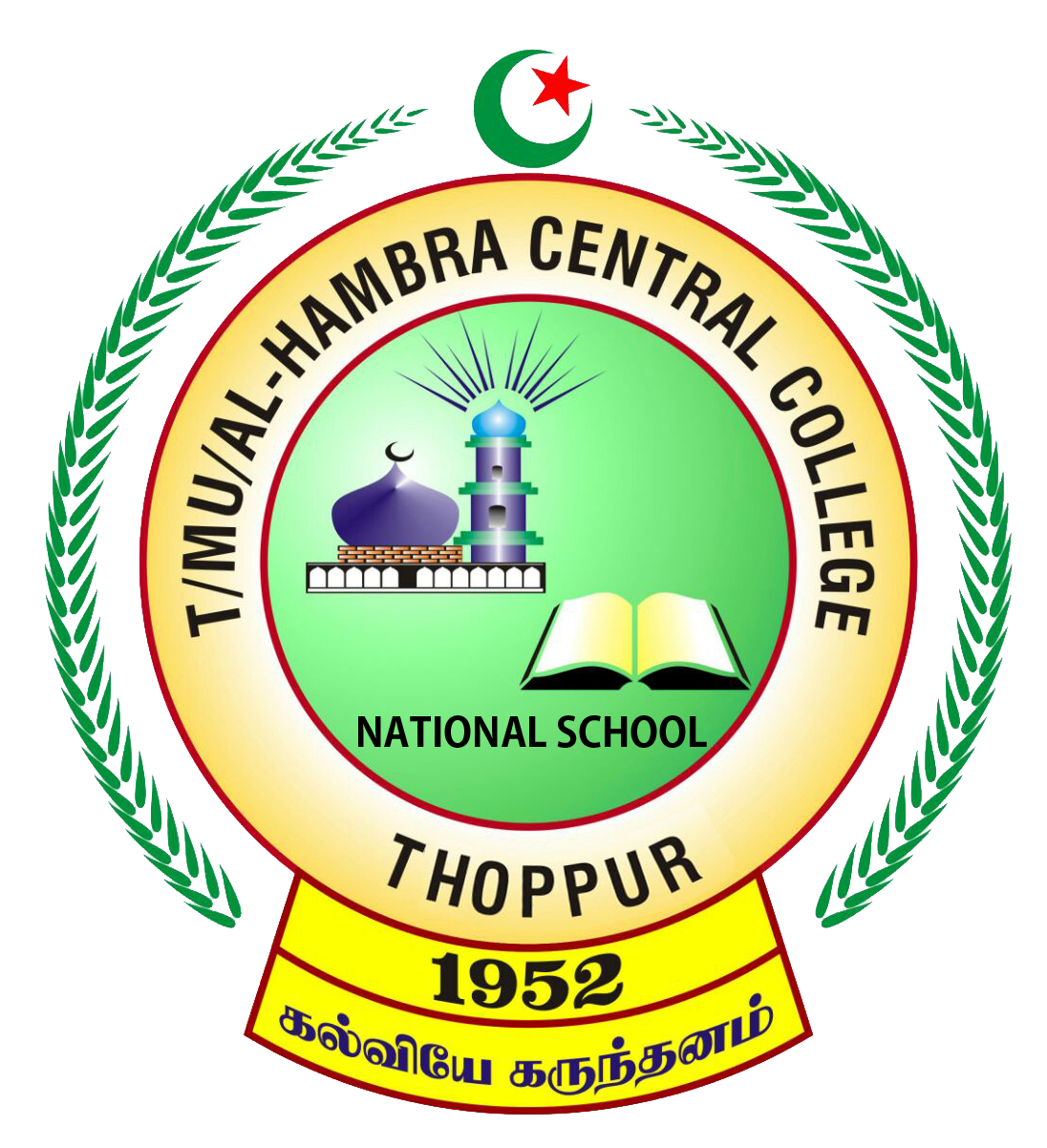Brief history of T/Mu/AL-Hambra Central College (National School)
AL-Hambra Central College (2019). Vidiyal. ABC Publications.
 AL-Hambra Central College (National School), presently located in the Mutur Secretariat Division of the Trincomalee District in Sri Lanka's Eastern Province, stands as a symbol of the Thoppur's unwavering commitment to providing quality education, even in historically significant yet sometimes challenging areas.
AL-Hambra Central College (National School), presently located in the Mutur Secretariat Division of the Trincomalee District in Sri Lanka's Eastern Province, stands as a symbol of the Thoppur's unwavering commitment to providing quality education, even in historically significant yet sometimes challenging areas.
Thoppur Government Mixed School was established in the year 1925 as the first government school established for the educational development of the people of Thoppur region. The school is now known as Fatima Muslim Ladies College. In the year 1952, a new school was started in the name of Thoppur Government Muslim School with classrooms from Grade 1 to 5. Honorable Marhoom Sekumugaideen Habib Muhammad appointed as the first Principal. During his tenure, he proved himself in the world of education as a personable principal who did his service well.
After this, the school got permission in 1958 as a school with classes from 01 to 10 and in 1958 new students were added in 06. After the transfer of the first principal, Umar Neina from Muthur became the second principal of the school. During his tenure, he focused on reuniting the students who had dropped out with the school and encouraging the parents to send the students who had matured in grade 5 to places like Mutur, Batticaloa, Kathankudi etc.
In 1961, the school was upgraded to Maha Vidyalaya and named Thoppur Muslim Maha Vidyalaya. After this other district teachers were transferred to this school. Thus, the learning-teaching processes of the students; The achievement level also increased and our school excelled in education.
In 1965 Thoppur Muslim High School was renamed as Al-Hambra Maha Vidyalaya. During this period, students who continued their education by going to other places joined this school.
In 1979, permission was obtained to conduct classes from 1 to 13 in this school and the first G.C.E. A/L started. 1-5 male students and 12-13 male and female Muslim and Tamil students followed by G.C.E. A/L and first appeared for G.C.E. A/L Examination in 1981.
1-13 was seen as an all-male school (Muslim, Tamil). After this various program were undertaken by the school community to improve the learning and teaching activities and achievement level of male students.
Later in the year 2000, this school was incorporated into the Nawodhya School system and upgraded as Nawodhya School. During this period more, students are selected for university.
2013: By being absorbed under the Ayad School Development Program, the school has evolved into a school with only students from grades 1-5 and grades 1-5. Grades 1-5 were separated from this school and seven schools were started nearby under the name of Royal Junior School and it became a school with male students from Grades 6 to 13. During this period, many students from this school were selected for college and its popularity increased.
In 2017, the school was upgraded to a 1AB school and permission was obtained to pursue all stream including Biotechnology and Physics. After this, various changes took place in this school. Buildings have been developed, the school has also been absorbed into the 13-year Guaranteed Education Scheme, students have achieved various feats at district, provincial and national levels in field and quiz competitions. University also won the first position at the district levels and its popularity prevailed. The school environment was also modified with different programs.
From the year 2019, with the achievement of A Pass in all subjects in the G.C.E.O/L and G.C.E.O/L in all subjects in the higher standard, achievements have been set not only in academics but also in co-curricular activities and nationally.
Our school has also been selected and upgraded as a national school under the 2020 thousand national school program and various programs of this program have been carried out. A new gateway has also been created and the record of medals in the national level conjoint canopy continues.











